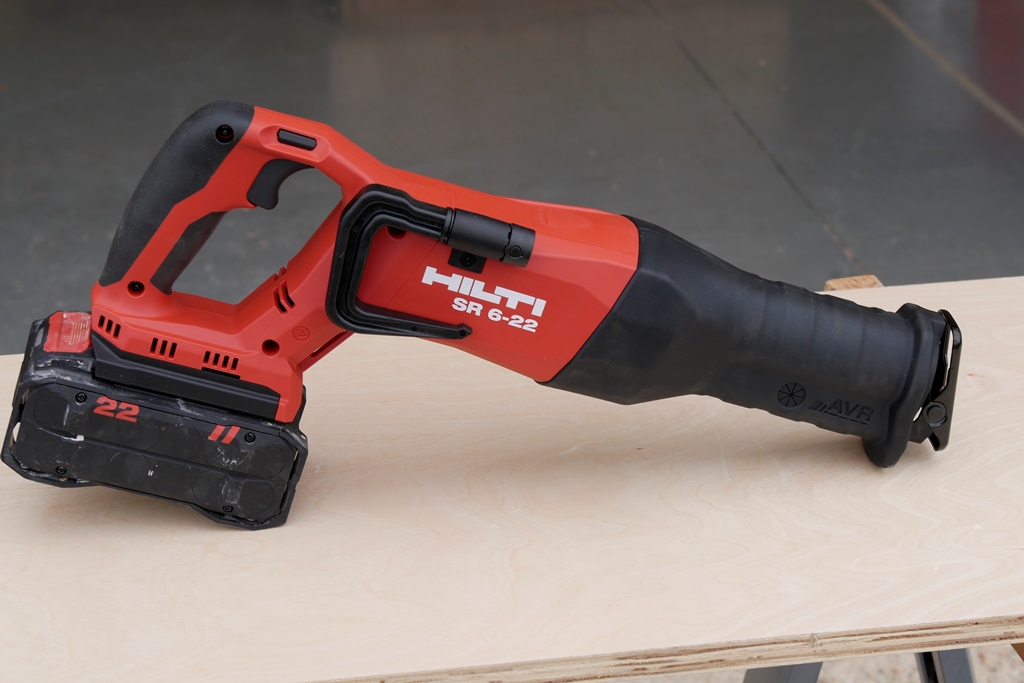What Is a Reciprocating Saw?
A reciprocating saw is a handheld demolition device with a straight blade that moves back and forth, like a powered hacksaw. It’s built for rough cuts, fast cuts, and teardown work where precision takes a backseat to power. Whether you're cutting through wood, nails, drywall, pipe, or even metal, a reciprocating saw gets it done fast.
You won’t use it for clean edges, but when the job is dirty, tight, or overhead, this is the device you reach for.
History of the Reciprocating Saw
The first reciprocating saw was introduced in the 1950s by Milwaukee, called the Sawzall, still one of the most recognized names today. It was designed as a demolition and jobsite tool to handle tasks that circular saws and hacksaws couldn’t do efficiently. Over the years, nearly every major brand has released a cordless and corded version, making it a staple in framing, plumbing, electrical, and remodeling.
What It’s Used For
Reciprocating saws are built for cutting quickly through a wide variety of materials. Common uses include:
What to Look for When Buying
Corded or Cordless
- Corded: More power and unlimited runtime
- Cordless: Easier to maneuver, better for tight spots or outdoor work
- 18V or 20V max is standard for most jobs
Stroke Length and Speed
- Longer stroke length = faster cutting (around 1 1/8 to 1 1/4 inch is common)
- Look for variable speed triggers for better control
Orbital Action
- Adds a circular motion to the blade for faster wood cutting
- Can usually be turned off for more control with metal or precision work
Adjustable Shoe
- Lets you pivot the base for more blade control
- Helps extend blade life and improve accuracy
Blade Change System
- Tool-free blade change saves time
- Most modern models have quick-release levers
Vibration Control
- Reduces fatigue, especially in longer sessions
- Higher-end models include counterbalance systems or dampened handles
Pros and Cons
Pros
Cons
Blade Compatibility
Reciprocating saws use universal shank blades and accept a wide range of styles. Common types include:
- Wood blades: Coarse teeth, great for framing or demolition
- Metal blades: Fine teeth, for pipe, conduit, and sheet metal
- Multi-purpose (bi-metal): Handles nails, screws, or mixed materials
- Pruning blades: Long, aggressive teeth for tree limbs and roots
- Carbide-tipped: For cast iron, hardened nails, or masonry
- Specialty blades: For plaster, drywall, or fiberglass
Safety and Maintenance Tips
Who This Is For
- Homeowners doing remodeling, demo, or yard work
- DIYers cutting through mixed materials or tough angles
- Pros in framing, electrical, plumbing, HVAC, and demolition
If you ever need to cut something fast and don't care about how it looks, a reciprocating saw should be in your setup.
FAQ
Yes, with a metal-cutting blade. It will cut through pipe, bolts, and even rebar.
Yes, if you use a pruning blade and secure the branch. It’s great for basic trimming and cleanup.
Yes. “Sawzall” is Milwaukee’s brand name, but they’re the same type of device.
Final Thoughts
A reciprocating saw isn’t about finesse, it’s about power and speed. It’s one of those things you don’t need every day, but when it’s time for demo, plumbing cuts, or rough framing, nothing beats it. Pick the right model for your kind of work, keep a variety of blades handy, and be ready to tear into just about anything.

